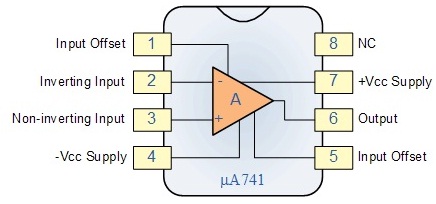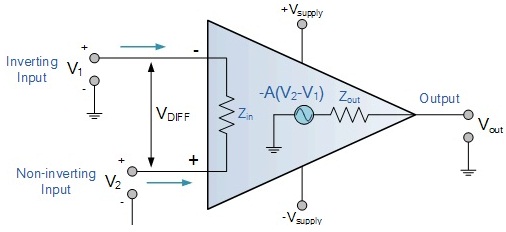To design and study a Summing Amplifier using Op-amp 741.
Introduction
An electronic amplifier, amplifier, or (informally) amp is an electronic device that increases the power of a signal. It does this by taking energy from a power supply and controlling the output to match the input signal shape but with the larger amplitude. In this sense, an amplifier modulates the output of the power supply.
This is a special case of the inverting amplifier, as it gives an inverted output which is equal to the weighted algebraic sum of all inputs. If the input resistors and the feedback resistor are chosen to be equal, the output is simply the negative sum of the inputs. Since there is no interaction between inputs, the operations of summing and weighting is very easily done.
An operational Amplifier, often called an op-amp, is a DC-coupled high-gain electronic voltage amplifier with differential inputs ad usually a single output. Typically the output of the op-amp is controlled either by negative feedback, which largely determines the magnitude of its output Voltage gain, or by positive feedback, which facilitates regenerative gain and oscillation. High input impedance at the input terminals and low output impedance are important typical characteristics.









